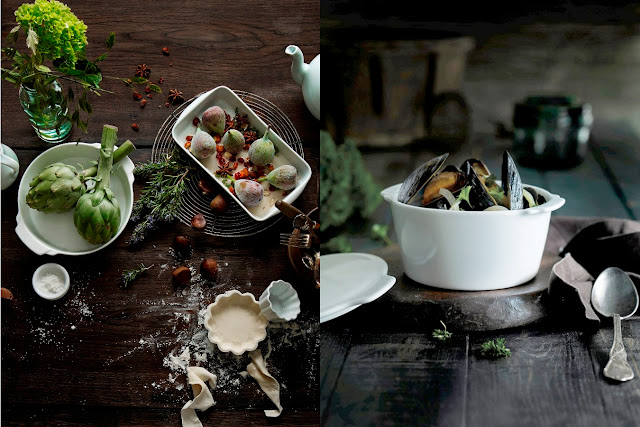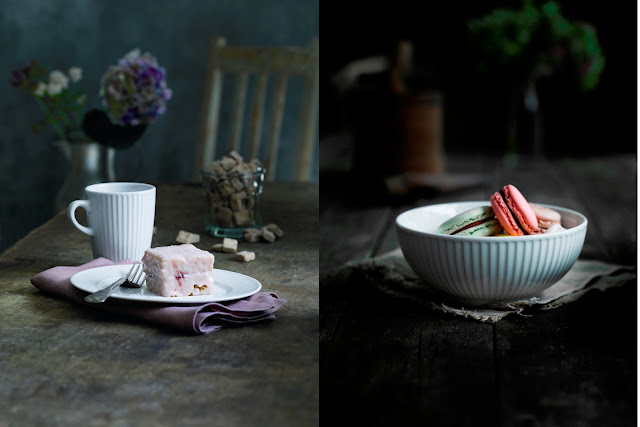I have been accused of having a love affair with French cooking. And, to say that I am passionately curious about food, French food, is an understatement. It undoubtedly started in grad school when I purchased a used copy of Mastering the Art of French Cooking by Julia Child (which still sits proudly on my kitchen shelf). And, thankfully, Steve A., Mike E., Rob S., and Tom S. ate my early attempts eagerly which gave me motivation to do more.
That start has propelled me to today. For some reason, I romanticize French cooking and especially the French country kitchen which has a certain je ne sais quoi! Yes, its a love affair. I guess its the aura that it creates in my mind ... cooking in abundance with an endless supply of the freshest of green, fruits and more. Artichokes just cut from the plant ... tomatoes still warm from the sun ... eggs just laid by funny, perky hens ... seafood straight from the fishing village, oh, the oysters. Can you just see the images in you mind? If not, let me help you with that --
Inspired by the bakeware and dinnerware? It's Pillivuyt, and of course it's French.
As for that roast chicken above, it is one of my favorite things to cook. Not only is it easy peasy, it goes great with a Chardonnay (I prefer Wente Riva Ranch, sorry its not French), and the carcass gets turned into great chicken stock (liquid gold).
Roast Chicken
3 tablespoons unsalted butter
1 tablespoon fresh chopped thyme
zest from one lemon
2 teaspoons sea salt
1 3-4 pound chicken
1 onion
1 carrot
Make the compound butter: combine first 4 ingredients in a bowl and mash them together with a fork to make a smooth butter. Set it aside. Dry the chicken and remove any leftovers from the inside of the bird (you don't want to roast the neck, giblets and things if there in there). Salt and pepper the inside of the chicken. Using your fingers, gently loosen the skin from the breast starting at the bottom (the cavity opening) and working your way up the breast. You will need to do this to each breast. Be careful not to tear the skin. Evenly spread the compound butter under the skin of each breast. Now, use your buttery hands to spread a light layer of the compound butter over the outside of the chicken. Salt and pepper the outside of the chicken. Let rest one hour. However, this is best done the night before and placed in the fridge with paper towels covering it. This helps to dry the skin and season the chicken, creating an even crispier, browned skin.
When ready to roast, preheat over to 425 degrees. Truss chicken. Roughly chop the onion and carrot and place it in the center of a shallow roasting pan (I use my vintage Le Creuset oval gratin). Place the trussed chicken on top of the chopped vegetables; this is the 'organic rack' for your chicken that adds flavor to the pan drippings. Add about 1/4 cup or so of water to the bottom of the roasting pan, this will keep the chicken juices from splashing all over the oven (I hate oven cleanup) and will also keep the juices from burning. Roast at 425 degrees for 30 minutes. After 30 minutes, reduce oven temperature to 350 degrees and roast for another 30-45 minutes, depending on the size of your bird. You will know it is done when the juices run clear. Remove from oven and let it rest uncovered for 20 minutes (don't be tempted to cut into the bird sooner!). Deglaze the pan and make a pan sauce and your ready to go. And remember, save that carcass for a great pot of chicken stock.
Enjoy!









No comments:
Post a Comment